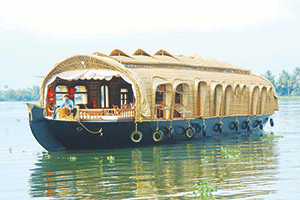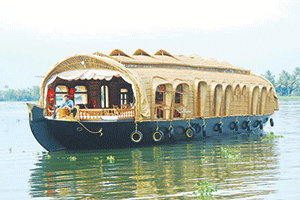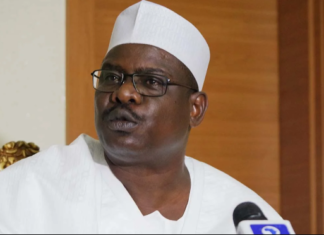Have you ever taken a boat cruise on the water ways of Lagos?
Magnificent sights of the coast shrink into a piece of land hardly wider than a man’s fist, then disappears!
Lagos boasts enormous coastal land. But it is untapped. For this neglect of water tourism, the state government comes up for criticism.
Luxury water travel

Water tourism is travelling by boat on holiday to visit aquatic sights. This can be travelling from luxury port to luxury port in a cruise ship. It can also be joining boat-cantered events, such as regattas, or landing a small boat for lunch or other recreation.
Water tourism is also known as a boating holiday, which is popular in summer in Europe and America. In Nigeria and other parts of Africa, water tourism can be done at any time except in the rainy season.
Experts say it is time Nigeria began to harness the huge potential of its vast coastal resources managed by the National Inland Waterways Authority (NIWA).
Lagos Water Regatta
The Lagos Water Regatta, the epitome of water tourism in Nigeria, was held in April at Regatta Village, Oyinkan Abayomi Drive, Ikoyi, Lagos. The theme was “Celebrating the Aquatic Splendour of Lagos”.
Apart from a few innovative acts, it was a bad showing for the lack of spectators; the consequence of poor planning and execution.
Enter NIWA
However, Mu’azu Sambo, Lagos Area Manager of NIWA, has shed more light on the operations, challenges, safety measures, and readiness to promptly respond to crises.
He also expressed optimism about the recent boost in water transportation in Lagos, which would in turn enhance the effectiveness of NIWA, whose job is to create an enabling environment for water tourism nationwide.
Sambo said the core mandate of NIWA “is to develop, maintain and sustain the over 10,000 kilometres of the rich waterways God has blessed Nigeria with in addition to our additional 850 kilometres coastline.
“Nigeria has the second largest waterways in Africa. It is ranked 11th in the world. There’s a great deal of potential in waterways, not only the potential of providing an alternative means of moving goods and persons but creating opportunities for jobs and economic wellbeing generally.”
NIWA was formed from the former Waterways Department of the Federal Ministry of Transport to give focus to the fourth mode of transport – after road, rail, and air.
Water transport, least developed
Sambo said water transport is the least developed in the country and recalled that the work of NIWA itself was hindered by the running battle it had with the Lagos State government when it took steps in 2008 to repel the NIWA Act.
The case ended on March 24, 2014 with the Federal High Court ruling in favour of NIWA.
“It is very interesting now that the challenge has been put to rest so that we can move forward.
“First, inland waterways transportation (IWT) is the least developed mode of transportation in Nigeria, and it is also highly capital intensive to develop because of the amount of resources required for channelisation.
“That challenge from Lagos State Government affected the ability of NIWA to forge ahead with its programmes in Lagos.
“It also challenged NIWA’s ability to raise the much needed revenue for development. The waterways require so many things on an annual bases.
“Siltation happens every day. Water hyacinth comes every year. All these affect water transport. There are pirates which only patrols can check. And patrols are very expensive.
“Resources that were required for all these were not available to the agency.”
Sambo also spoke on the success of NIWA in terms of growth in the size of boats plying the water ways and limited mishaps
“There’s been a very big boost compared to what we had before. I can shout that on the rooftop. Before now, there were so many boat mishaps on our waters. NIWA has been very concerned about boat mishaps.
“I recall the sad case of the boat that capsized on its way from Elegbata to Majidun in Lagos last year and a number of people who lost their lives. In fact, we were so concerned that we made it a topic of discourse last year at our maiden international conference and exhibition.
“The event was attended by maritime stakeholders and there was an exhibition by boat builders, boat manufacturer, dredging companies, et cetera. We talked about safety, security, and many other things.
“One of the things identified as the major cause of this mishap is the use of inappropriate boats on our waterways. And so, we deliberately went on a search for investors who will bring in boats of international standards to ferry people, especially in Lagos.”
Lagos to Terma by ferry
Earlier in the year, there were plans to begin ferry services between Nigeria and Ghana, connecting Nigeria’s commercial nerve centre, Lagos, to the port city of Tema in Ghana.
Sambo confirmed that “some local and foreign investors have indicated interest to operate ferries within Lagos as well as from Lagos to Tema in Ghana, in order to move passengers and goods along the West African sub-region.”
The services would ease the movement of people, especially those living on the outskirts of Lagos who work on Lagos Island.
“The company has brought in nine boats already,” Sambo added.
“[The promoter] is already doing a lot of investment in inland water transport in Sierra Leone. He has come in here. He wants to run ferries between CMS and Ikorodu and also between CMS and Mile 2 in Lagos.
Relief for Lagosians
“There are a lot of Lagosians who come from FESTAC and beyond into Lagos for work every day, and coming by road is a lot of headache. If they can get transportation by water from Mile 2 straight to CMS, that will help them a lot.
“They can find somewhere they will park their vehicles, enter the ferry and then come to Lagos in 15 to 20 minutes.
“Then, there is another company that wants to run between CMS and Tema in Ghana. From this jetty here, they want to move passengers and goods to Tema on the west coast.”
Safety measures
On safety, Sambo said: “First of all, structurally speaking, we have a safety compliance team and a search and rescue team in the Lagos area office.
“The safety compliance team is made up of the staff of the agency from the maritime department which visits jetties within Lagos and ensures that safety standards are always adhered to.
“One of the major considerations for safety is the life jacket. We ensure that life jackets are available and that they are of standard quality. And that operators insist that passengers wear the life jackets before they board their boats.
“Whenever the safety compliance team comes across substandard life jackets, it seizes them and gets them destroyed.”
“The search and rescue team is another arm of our safety structure. The members are based here in the area office. They live here 24 hours. They have telephone numbers which operators call when there is any mishap. They call and we respond swiftly with our patrol boats.
NIWA has different patrol boats that ply at different speeds – 30 nautical miles, 40 nautical miles. The fastest boat available is used when there is a distress call.
But Sambo stressed that “there’s no level of preparation by man that can prevent a divinely ordained disaster. That is why in contracts all over the world, they have a clause on force majeure. These are acts that are beyond the capacity of the human being. They are acts of God.
“But we must be prepared and do everything necessary to avoid a disaster by making sure everything is 100 per cent certified. Our means of communication must remain intact even as we ensure that those who should be reached can be reached.”













